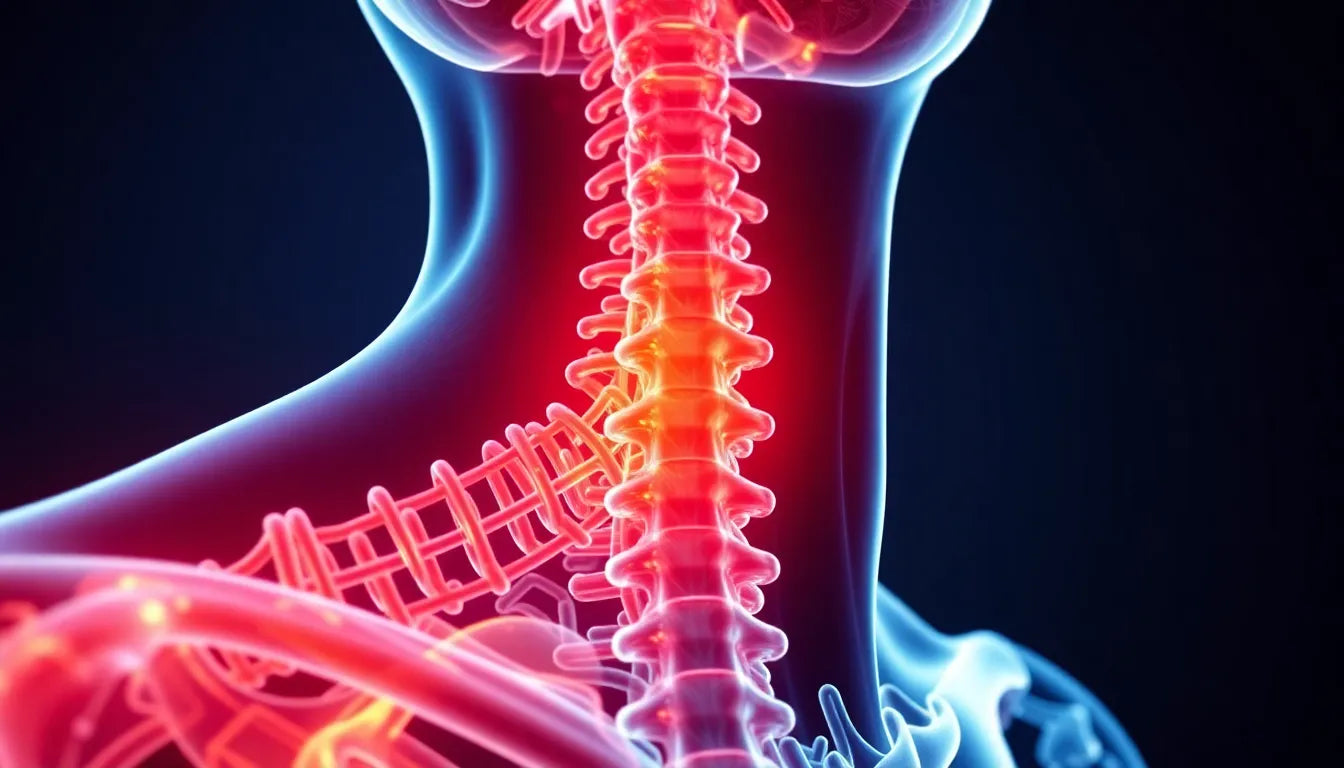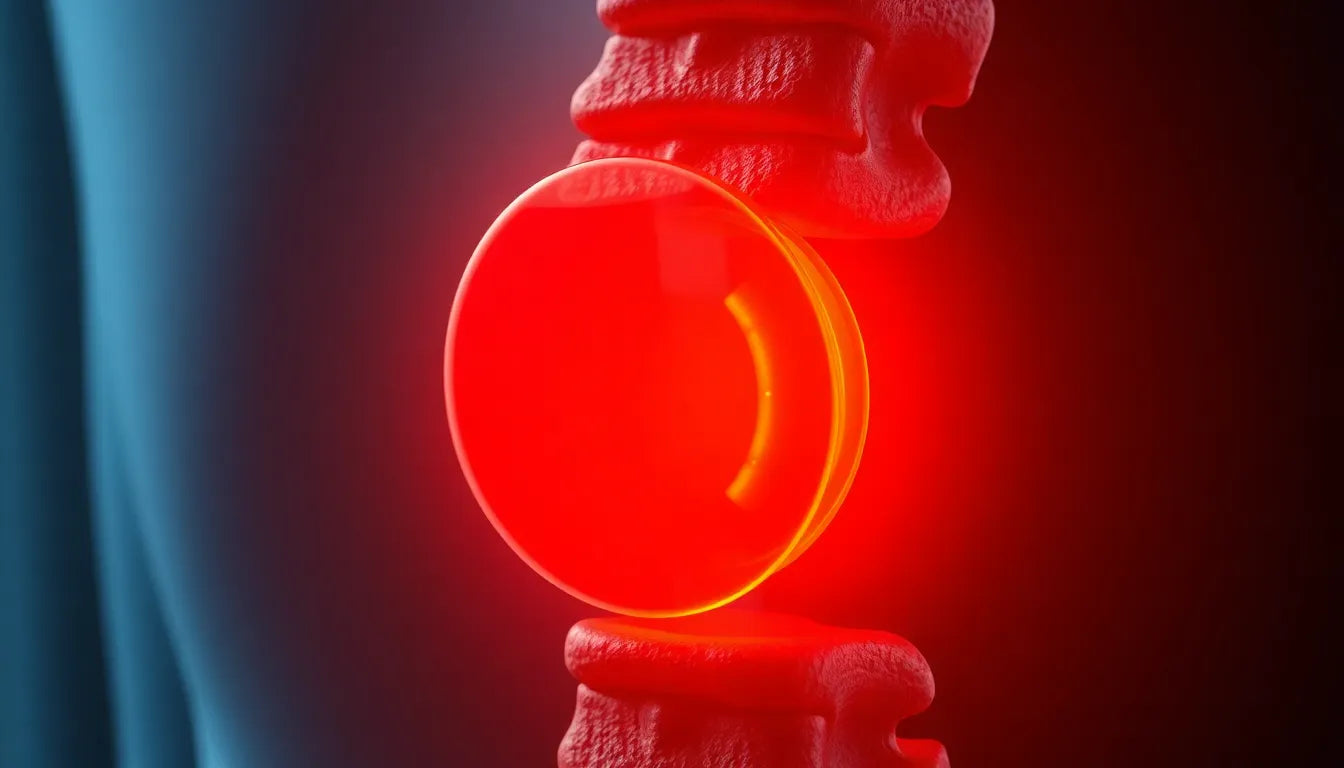Neck pain and fatigue are common complaints that can significantly hinder daily activities and overall quality of life. These symptoms often lead individuals to seek medical advice and explore potential underlying causes. One possible culprit that frequently comes up in discussions is a herniated disc in the neck, also known as a cervical herniated disc. This condition can be both painful and debilitating, and understanding its impact is crucial for those affected.
What is a herniated disc in the neck?
A herniated disc occurs when the inner gel-like core of a spinal disc pushes through a tear in the tougher outer layer. This can happen in any part of the spine, but when it occurs in the cervical region, it is referred to as a cervical herniated disc. The cervical spine consists of seven vertebrae in the neck, and these discs act as cushions between the bones, allowing for flexibility and movement.
When a disc in this region herniates, it can compress nearby nerves, leading to symptoms such as neck pain, arm pain, and even weakness or tingling in the limbs. These symptoms can be quite distressing and may interfere with everyday tasks, affecting both physical and mental well-being.
Exploring the link between neck herniated discs and fatigue
The purpose of this post is to delve into the potential connection between a herniated disc in the neck and fatigue. While fatigue is not always the first symptom associated with cervical herniated discs, it is a common complaint among those suffering from this condition. The persistent pain and discomfort can be exhausting, leading to a decrease in energy levels and overall vitality.
Understanding the relationship between these symptoms is essential for addressing common concerns and questions. By exploring this link, we aim to provide valuable insights into how a herniated disc in the neck might contribute to feelings of fatigue, and what steps can be taken to manage these symptoms effectively.
This exploration will not only shed light on the physical aspects of the condition but also consider the broader implications for those experiencing neck pain and fatigue. Through this post, we hope to offer guidance and support to those seeking relief from these challenging symptoms.
Symptoms and causes of a herniated disc in the neck
Understanding the specific symptoms and causes of a herniated cervical disc is crucial for identifying the condition and seeking appropriate treatment. The cervical spine, which comprises seven vertebrae, is a complex structure that supports the head and allows for a wide range of motion. When a disc herniates in this region, it can lead to a variety of symptoms due to the pressure exerted on nearby nerves.
Common symptoms of a herniated disc in the neck include persistent neck pain, which can radiate to the shoulders and arms. Patients often report sensations of tingling, numbness, or weakness in the arms, hands, or fingers. In severe cases, the discomfort can extend to the legs, affecting overall mobility. While fatigue is not a direct symptom of a herniated disc, it can manifest as a secondary effect due to the body's constant struggle with pain and discomfort.
The connection between herniated disc and fatigue
The relationship between a herniated disc in the neck and fatigue is often indirect, yet significant. The constant pain and physical limitations imposed by the condition can lead to chronic stress and exhaustion. This is because the body is continuously working to manage the pain, which can drain energy levels and lead to fatigue.
According to insights from reputable health sources like Spine-health, the ongoing discomfort and pain associated with a herniated disc can disrupt sleep patterns, further exacerbating feelings of tiredness. WebMD also suggests that while fatigue is not a primary symptom, the overall impact of a herniated disc on one's health can contribute to a sense of persistent fatigue.
Upper cervical spine issues and their role in fatigue
Misalignments in the upper cervical spine can also play a role in contributing to fatigue. When the alignment of the vertebrae is compromised, it can lead to a range of symptoms beyond pain, including restricted movement and mood swings. The Upper Cervical Institute highlights that such misalignments can exacerbate feelings of fatigue due to the body's increased effort to maintain balance and function.
A case study from the Upper Cervical Institute illustrates how correcting these misalignments can lead to significant improvements in energy levels and overall well-being. Patients who underwent treatment for upper cervical spine issues reported a decrease in fatigue and an improvement in their quality of life.
Competitor analysis and insights
When examining how top health websites cover the topic of herniated discs and fatigue, it's clear that comprehensive and medically accurate information is essential. Websites like Spine-health and WebMD provide detailed explanations of symptoms, causes, and treatment options, emphasizing the importance of understanding the full scope of the condition.
These platforms highlight the need for a holistic approach to managing herniated discs, considering both the physical symptoms and their broader impact on an individual's life. By offering insights into the indirect effects of a herniated disc, such as fatigue, these resources underscore the importance of addressing all aspects of the condition for effective management.
In conclusion, while fatigue may not be the most obvious symptom of a herniated disc in the neck, it is a significant factor that can affect those dealing with the condition. Understanding the link between neck herniated discs and fatigue is crucial for developing effective treatment strategies and improving the quality of life for affected individuals. As we continue to explore this topic, we aim to provide valuable guidance and support for those seeking relief from the challenges posed by neck pain and fatigue.
Treatment and management options for herniated disc in the neck
Addressing a herniated disc in the neck and the associated fatigue involves a combination of medical and non-medical treatments. Understanding these options can help individuals manage symptoms effectively and improve their quality of life.
Medical treatments often include pain medications, anti-inflammatory drugs, and, in some cases, corticosteroid injections to reduce inflammation and pain. In more severe cases, surgical intervention may be necessary to relieve nerve compression and restore normal function.
Non-medical treatments focus on physical therapy and chiropractic care, which aim to improve mobility, strengthen neck muscles, and correct spinal alignment. Physical therapy exercises can help alleviate pain and prevent further injury by enhancing flexibility and strength. Chiropractic adjustments, particularly in the upper cervical spine, can relieve pressure on nerves and improve overall spinal health.
| Treatment Option | Benefits | Potential Drawbacks |
|---|---|---|
| Pain Medications | Quick relief from pain | Potential side effects, not a long-term solution |
| Physical Therapy | Improves mobility and strength | Requires time and commitment |
| Chiropractic Care | Corrects misalignments, can reduce pain | Effectiveness varies, not suitable for all cases |
| Surgery | Can provide permanent relief | Invasive, with risks and recovery time |
It is crucial to address both pain and fatigue in treatment plans, as managing one without the other may not provide comprehensive relief. A holistic approach that considers the physical and emotional aspects of living with a herniated disc can lead to better outcomes.
Preventive measures for neck health
Preventing a herniated disc in the neck involves adopting healthy lifestyle practices that support spinal health. Here are some tips to help maintain neck health and reduce the risk of herniated discs:
- Ergonomic Practices: Ensure that workspaces, including desks and computer setups, are ergonomically designed to reduce strain on the neck.
- Posture Correction: Maintain good posture while sitting and standing to prevent undue stress on the cervical spine.
- Neck Exercises: Regularly perform exercises that strengthen neck muscles, improve flexibility, and enhance overall spinal support.
By incorporating these preventive measures into daily routines, individuals can reduce the risk of developing a herniated disc and associated fatigue, leading to better overall health and well-being.
Frequently asked questions
What are the symptoms of a herniated disc in the neck?
Common symptoms include neck pain, arm pain, numbness, tingling, and weakness in the limbs. Fatigue can also occur as a secondary symptom due to the ongoing discomfort and stress on the body.
How does a herniated disc cause fatigue?
Fatigue can result from the chronic pain and discomfort associated with a herniated disc. The body's continuous effort to manage pain can lead to exhaustion and decreased energy levels.
What are the best treatments for a herniated disc in the neck?
Treatment options vary depending on the severity of the condition and individual needs. They include pain medications, physical therapy, chiropractic care, and, in severe cases, surgery. A comprehensive approach addressing both pain and fatigue is recommended.
Can lifestyle changes help prevent a herniated disc?
Yes, adopting ergonomic practices, maintaining good posture, and performing neck-strengthening exercises can help prevent herniated discs and reduce the risk of associated fatigue.
When should I see a doctor for neck pain and fatigue?
If neck pain and fatigue persist, worsen, or interfere with daily activities, it is essential to seek medical advice. A healthcare professional can provide a proper diagnosis and recommend appropriate treatment options.























